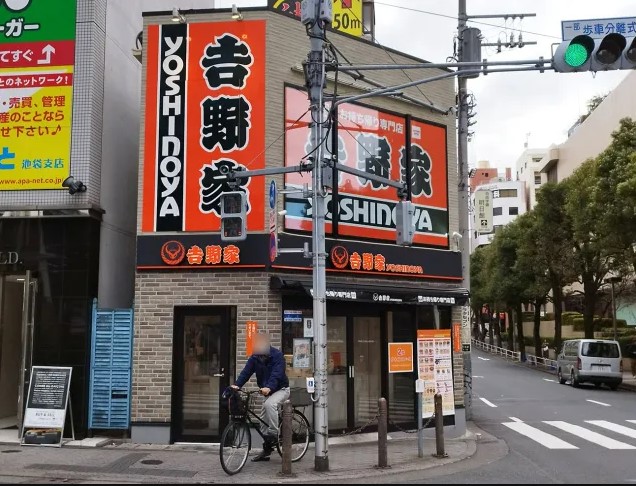
The verdict seems to be that you’re either going to roll with them…or not.
February 3, 2024 is Setsubun in Japan, a cultural festival marking the day before the start of spring in the old calendar of Japan. A special kind of uncut sushi roll is consumed on Setsubun called ehomaki (恵方巻), which symbolizes prosperity in the year to come. In recent years around this time, a proliferation of these rolls have been sold at convenience stores and supermarkets throughout the country–both traditional ones as well as more modern takes.
Even beef bowl fast food giant Yoshinoya is offering its own take on the ehomaki called “beef ehomaki.” Our Japanese-language reporter Seiji Nakazawa was curious how this version would stack up to more standard ones, so he put in a reservation at the closest Yoshinoya specializing in takeout orders, the Ikebukuro Metropolitan Street branch, to be picked up on February 2.
▼ Some Yoshinoya locations offer takeout and some don’t–and the ehomaki is a takeout-exclusive deal.
According to a staff member, there are about 10 locations of Yoshinoya in the Tokyo metropolitan area that specialize in takeout. Seiji had had no idea this was the case.
There were also two kinds of ehomaki for him to choose from. First was a plain version for 645 yen (US$4.35) and second was a pickled ginger cheese version for 699 yen. He bought one of each.
▼ Plain version on the left and ginger cheese version on the right
Seiji was running a bit later than the pick-up time he had told the staff by phone, so by the time he retrieved them and headed back to the office, there was some condensation on the bag. It was a sign of its freshness, though.
Taking them out of the bag, he was delighted to see Yoshinoya’s logo on the nori wrapping. It was a fun detail.
Digging in, he began by comparing ingredients. The plain one had a filling of beef and onions, while the other one had the same plus pickled ginger and cheese. Interestingly, the rice inside was also not vinegared sushi rice but regular steamed rice.
The plain version definitely had a greater consistency of taste. Meanwhile, the ginger cheese one had a good balance of flavor near the edge of the roll where the pickled ginger hit a wall of beef, but it was a bit inconsistent in other areas. At times it overpowered the meat altogether and tasted more like a red pickled ginger sushi roll, which was not supposed to be the goal here.
Thinking of it in another way, if a few people were to split the plain roll, they wouldn’t end up fighting over who got which piece since the quality was the same with every bite. Seiji should also mention…
…that it basically tasted like gyudon with nori in sushi roll form. That could be good or bad news depending on the person.
Consequently, while some might appreciate the familiar flavor, others might find it a little bit boring, or wonder why gyudon needs to be made into sushi roll form in the first place. Also, seven filling ingredients is supposed to be the luckiest style to mirror the Seven Lucky Gods of Japanese mythology, so there’s no denying that these ones were definitely lacking in that department.
Seiji thought this realization might even make the demons that he was supposed to be metaphorically kicking out of his life on Setsubun a little bit sad.
Like them or love them, the Yoshinoya ehomaki are part of the recent explosion of novel types of ehomaki that are here to stay. It’s too late to order any more from Yoshinoya for this Setsubun, but you can always try making some delicious and more traditional ones by yourself at home.
All images © SoraNews24
● Want to hear about SoraNews24’s latest articles as soon as they’re published? Follow us on Facebook and Twitter!
[ Read in Japanese ]